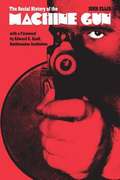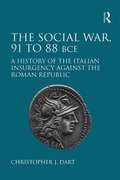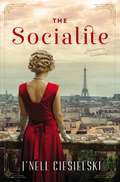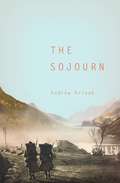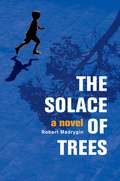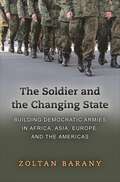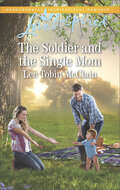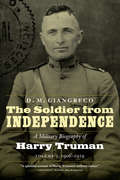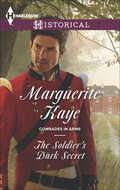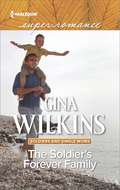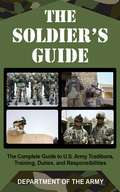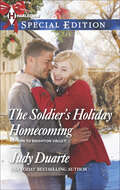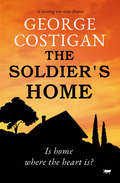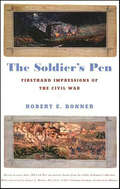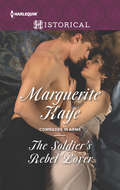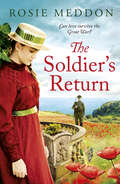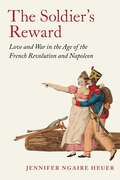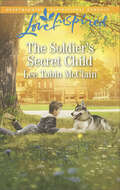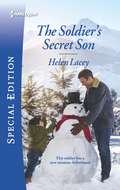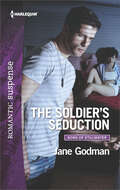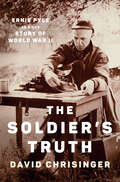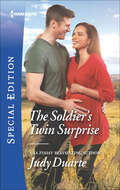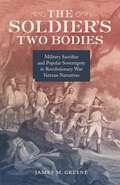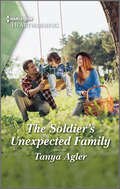- Table View
- List View
The Social History of the Machine Gun
by John EllisAs John Ellis narrates in this book: "Machine guns are now commonplace. The indispensable aid they offer to soldiers, policemen and terrorists is taken for granted. Yet this acceptance has not come easily. The reasons for this are numerous, but most of them are much more than a simple evaluation of the machine gun's technical merits. The following pages will show that the general aspirations and prejudices of particular social groups are just as important for the history of military technology as are straightforward problems of technical efficiency. Guns, like everything else, have their social history. In this book it will be seen that the anachronistic ideals of the European officer class, the messianic nature of nineteenth-century capitalism, the imperialist drive into Africa and elsewhere, and the racialist assumptions that underpinned it, were more important to the history of the machine gun than any bald assessment of its mechanical efficacy. The history of technology is part and parcel of social history in general. The same is equally true of military history, far too long regarded as a simple matter of tactics and technical differentials. Military history too can only be understood against the wider social background".
The Social War, 91 to 88 BCE: A History of the Italian Insurgency against the Roman Republic
by Christopher J. DartThe Social War was a significant uprising against the Roman state by Rome’s allies in Italy. The conflict lasted little more than two and a half years but it is widely recognised as having been immensely important in the unification of Roman Italy. Between 91 and 88 BCE a brutal campaign was waged but the ancient sources preserve scant information about the war. In turn, this has given rise to conflicting accounts of the war in modern scholarship and often contradictory interpretations. This book provides a new and comprehensive reassessment of the events surrounding the Social War, analysing both the long-term and the immediate context of the conflict and its causes. Critical to this study is discussion of the nexus of citizenship, political rights and land which dominated much of second century BCE politics. It provides a new chronological reconstruction of the conflict itself and analyses the strategies of both the Romans and the Italian insurgents. The work also assesses the repercussions of the Social War, investigating the legacy of the insurgency during the civil wars, and considers its role in reshaping Roman and Italian identity on the peninsula in the last decades of the Republic.
The Socialite
by J'Nell CiesielskiGlamour, treachery, and espionage collide when an English socialite rushes to save her sister from the Nazis. As the daughter of Sir Alfred Whitford, Kat has a certain set of responsibilities. But chasing her wayward sister, Ellie, to Nazi-occupied Paris was never supposed to be one of them. Now accustomed to the luxurious lifestyle that her Nazi boyfriend provides, Ellie has no intention of going back to the shackled life their parents dictate for them—but Kat will stop at nothing to bring her sister home. Arrested for simply trying to defend himself against a drunken bully, Barrett Anderson is given the option of going to jail or serving out his sentence by training Resistance fighters in Paris. A bar owner serves as the perfect disguise to entertain Nazis at night while training fighters right below their jackboots during the day. Being assigned to watch over two English debutantes is the last thing he needs, but a payout from their father is too tempting to resist. Can Barrett and Kat trust each other long enough to survive, or will their hearts prove more traitorous than the dangers waiting around the corner?
The Sojourn
by Andrew KrivakThe Sojourn, winner of the Chautauqua Prize and finalist for the National Book Award, is the story of Jozef Vinich, who was uprooted from a 19th-century mining town in Colorado by a family tragedy and returns with his father to an impoverished shepherd's life in rural Austria-Hungary. When World War One comes, Jozef joins his adopted brother as a sharpshooter in the Kaiser's army, surviving a perilous trek across the frozen Italian Alps and capture by a victorious enemy.A stirring tale of brotherhood, coming-of-age, and survival, that was inspired by the author's own family history, this novel evokes a time when Czechs, Slovaks, Austrians, and Germans fought on the same side while divided by language, ethnicity, and social class in the most brutal war to date. It is also a poignant tale of fathers and sons, addressing the great immigration to America and the desire to live the American dream amidst the unfolding tragedy in Europe.The Sojourn is Andrew Krivak's first novel. Krivak is also the author of A Long Retreat: In Search of a Religious Life, a memoir about his eight years in the Jesuit Order, and editor of The Letters of William Carlos Williams to Edgar Irving Williams, 1902-1912, which received the Louis L. Martz Prize. The grandson of Slovak immigrants, Krivak grew up in Pennsylvania, has lived in London, and now lives with his wife and three children in Massachusetts where he teaches in the Honors Program at Boston College.
The Solace of Trees: A Novel
by Robert MadryginA Bosnian War orphan of Muslim heritage escapes his homeland, finds a new family in New England, and learns to deal with his trauma--and years later falls into the depths of post-9/11 America's extraordinary rendition program. A piercing and resonant debut novel about war and the endurance of the human spirit, and a cautionary tale about the damage that can be inflicted upon war victims when wealthy nations become obsessed with self-protection and retribution. This book contains an author Q&A at the back, and so is ideal for book group adoption and discussion. The Solace of Trees tells the story of Amir, a young boy of secular Muslim heritage who witnesses his family's murder in the Bosnian War. Amir hides in a forest, mute and shocked, among refugees fleeing for their lives. Narrowly escaping death while wandering through rural Bosnia, he finds sanctuary in a UN camp. After a charity relocates him to the United States, the retired professor who fosters Amir learns that the boy holds a shameful secret concerning his parents' and sister's deaths. Amir's years in the US bring him healing and a loving place in a new family. In college he falls in love⎯and he accepts the request of a professor of Islamic studies to edit a documentary film on the plight of Palestinians. 9/11 comes, and with it, the arrest of the professor for his ties to terrorist organizations. As Amir enters adulthood, his destiny brings him full circle back to the darkness he thought he'd forever escaped. For fans of Sara Novic's Girl at War, Kenan Trebincevic's The Bosnia List, and Steven Galloway's The Cellist of Sarajevo.
The Soldier and the Changing State: Building Democratic Armies in Africa, Asia, Europe, and the Americas
by Zoltan BaranyThe Soldier and the Changing State is the first book to systematically explore, on a global scale, civil-military relations in democratizing and changing states. Looking at how armies supportive of democracy are built, Zoltan Barany argues that the military is the most important institution that states maintain, for without military elites who support democratic governance, democracy cannot be consolidated. Barany also demonstrates that building democratic armies is the quintessential task of newly democratizing regimes. But how do democratic armies come about? What conditions encourage or impede democratic civil-military relations? And how can the state ensure the allegiance of its soldiers? Barany examines the experiences of developing countries and the armed forces in the context of major political change in six specific settings: in the wake of war and civil war, after military and communist regimes, and following colonialism and unification/apartheid. He evaluates the army-building and democratization experiences of twenty-seven countries and explains which predemocratic settings are most conducive to creating a military that will support democracy. Highlighting important factors and suggesting which reforms can be expected to work and fail in different environments, he offers practical policy recommendations to state-builders and democratizers.
The Soldier and the Single Mom (Rescue River #4)
by Lee Tobin McClainA widowed veteran and a single mom discover just how healing love can be in this wholesome contemporary Western romance.When Buck Armstrong encounters Gina Patterson and her baby stranded on a dark country road outside town, he intends to help them out—and then keep his distance. Gina and little Bobby remind the handsome veteran too much of all he’s lost. Besides, the vulnerable single mom seems equally wary of getting involved. Things begin to change once Gina and her son settle into the boardinghouse run by Buck’s sister. Being with Gina and Bobby makes Buck question his plans to leave town for a fresh start. Suddenly he has dreams of forging a new family, even though it will mean risking his heart . . .
The Soldier from Independence: A Military Biography of Harry Truman, Volume 1, 1906-1919
by D. M. Giangreco Alonzo L. HambyRevealing the little-known facts of Harry Truman’s remarkable military performance, as a soldier and as a politician, The Soldier from Independence adds a whole new dimension to the already fascinating character of the thirty-third president of the United States. D. M. Giangreco shows how, as a field artillery battery commander in World War I, Truman was already making the hard decisions that he knew to be right, regardless of personal consequences. Truman oversaw the conclusion of the Second World War, stood up to Stalin, and met the test of North Korea’s invasion of the South. He also had the fortitude to defy Gen. Douglas MacArthur, one of America’s most revered wartime leaders, and ultimately fired the Far East commander, often characterized as the American Caesar. Filling in the details behind these world-changing events, this military biography supplies a heretofore missing—and critical—chapter in the story of one of the nation’s most important presidents. The Soldier from Independence recounts the World War I military adventure that would mark a turning point in the life of a humble man who would go on to become commander in chief.
The Soldier's Dark Secret: The Rake To Rescue Her The Soldier's Dark Secret Reunited With The Major (Comrades in Arms #1)
by Marguerite KayeThe truth behind the hero Officer Jack Trestain may have been one of Wellington's most valued code-breakers, but since Waterloo, he's hung up his uniform. If only he could just as easily put aside the tortured memories he carries deep within... Perhaps enchanting French artist Celeste Marmion might be the distraction he so desperately craves? Except Celeste harbors secrets of her own, and questions that she needs Jack's help to solve! With Celeste's every touch an exquisite temptation, how close can Jack get without revealing his darkest secret of all? Comrades in Arms War heroes, heartbreakers...husbands?
The Soldier's Forever Family
by Gina WilkinsA weekend to remember...leads to the surprise of his life Adam Scott never thought he was missing out. Since leaving the military, he's been working at a luxurious resort: no commitments, no complications. Just the way he likes it. That is, until the morning Adam meets a young boy on the beach-a boy who looks very much like him. His son. Six years ago, Adam and Joanna Zielinski indulged in a passionate, no-strings weekend. Even now, their chemistry still burns. But Adam knows all too well that some men shouldn't be fathers. He'll protect his son the best way he knows how...even if it means saying goodbye to the family he never knew he wanted.
The Soldier's Guide: The Complete Guide to U.S. Army Traditions, Training, and Responsibilities
by ArmyThis manual condenses important information from a number of U.S. Army regulations, field manuals, and other publications into one crucial volume. Written to answer the many questions asked by soldiers of all ranks in the Army, it covers everything from the history and traditions of the American military to training and service benefits. Find out about such ideals as "The Warrior Ethos" that drive soldiers during a mission and the Army's values of loyalty, duty, respect, selfless service, honor, integrity, personal courage, and discipline. In addition, sections cover ethical reasoning, the basic principles of war, military courtesies, individual combat skills, and more.
The Soldier's Holiday Homecoming: A Weaver Christmas Gift The Soldier's Holiday Homecoming Santa's Playbook (Return to Brighton Valley #3)
by Judy DuarteA marine returns to his Texas hometown, where an accident takes his memory—and gives him a second chance at love—in this inspiring holiday romance.Sergeant Joe Wilcox never thought he’d come back to Brighton Valley, Texas. But he made a promise to a friend that he refuses to break. After spending years trying to forget his past, Joe finally gets his wish . . . when an accident robs him of his memory. Chloe Dawson, who offers to nurse him back to health, is a light in the dark . . . but the mysterious, beautiful blonde is strictly off limits. And the discovery of a letter Joe was carrying—addressed to Chloe—only deepens the mystery. An undeniable desire sizzles between them. But as Christmas approaches and Joe’s memories, Chloe must help him face his past if there is any hope for their future . . .
The Soldier's Home: A Moving War-Time Drama (The Soldier Series #2)
by George CostiganThe follow-up to The Single Soldier: A powerful novel set in a small French village as one man is caught between war and peace, heartache and hope . . .The Germans have left, the war is over, and his home has been rebuilt—but a home is just a set of empty rooms without people and love. Around him, the community tries to rekindle their lives, and rediscover their reasons for surviving. As the soldier waits for the return of his love, the world keeps moving, threatening to leave his hopes and dreams behind—and his soul remains troubled, until peace finally arrives from a very unexpected source . . .Praise for The Single Soldier:“Magnificent.” —Willy Russell, author of Blood Brothers and Educating Rita
The Soldier's Legacy
by Gina WilkinsHe’s an ex-marine with so much to prove...Ex-marine Trevor Farrell is a classic workaholic. Which means he has a successful chain of resorts...and an empty house. So having Jade Evans, the widow of a war hero, and her three kids stay with him while their new home gets renovated is no problem. For a few weeks anyway.Trevor admires Jade’s determination to give her kids a good life. For years, he’s only needed to focus on himself. And yet spending time with Jade leaves him yearning for more. But after being married to a genuine hero, why would she want a man who never saw active duty? If Trevor wants a life with Jade and her family, he’ll need to prove to her—and himself—that he deserves it.
The Soldier's Pen: Firsthand Impressions of the Civil War
by Robert E. BonnerThey are all infantrymen; none were commissioned officers. One is a German-speaking artist whose sole record is nineteen stunning watercolors that cover a year's enlistment. Another is a free black from Syracuse, New York. Six are from slave states, one of whom was a Unionist. Drawing from the more than 60,000 documents housed in the privately held Gilder Lehrman Collection, Robert E. Bonner has movingly reconstructed the experiences of sixteen Civil War soldiers, using their own accounts to knit together a ground-level view of the entire conflict. The immediacy of diaries and the intimacy of letters to loved ones accompany the humor of an anonymous cartoonist from Massachusetts, the vivid paintings of Private Henry Berckhoff.All reproduced for the first time in The Soldier's Pen, the documents and images that Bonner weaves together, providing context and explanation as required, powerfully re-create the day-to-day lives of the soldiers who fought and died for Union and Confederacy. Not since the 2000 publication of Robert Sneden's paintings and papers in Eye of the Storm has a collection of original Civil War documents so evocatively captured the war.
The Soldier's Rebel Lover: A Regency Historical Romance (Comrades in Arms #2)
by Marguerite KayeA hero...a rebel...a desire worth fighting for! When Major Finlay Urquhart was last on the battlefield, he shared a sizzling moment with daring Isabella Romero. Two years later, Finlay has one final duty to perform for his country-one that reunites him with this rebellious señorita! Except Isabella has her own mission, which means that no matter how much she craves Finlay's touch, she can never tell him the truth. But she's underestimated Finlay's determination to protect her, and soon she finds herself letting her guard down, one scorching kiss at a time!
The Soldier's Return (Woodicombe House Sagas)
by Rosie MeddonAs the end of the war nears, change arrives at Woodicombe House…Kate Channer is settled in London helping half-sister, Naomi, as her housekeeper while the Great War rages on. When Naomi’s brother, Ned, is sent home seriously injured it’s up to Kate to manage the household as well as Ned’s rehabilitation.But with the growing workload, Kate struggles to keep everything running smoothly and yearns to return to Woodicombe House. And with no word from her husband, Luke, fighting in France, it’s becoming increasingly difficult to stay positive.Hard times are ahead for Kate and her family – when the realities of war land on their doorstep, can Kate find the strength to keep going?The final book in the Woodicombe House Saga trilogy, this story is perfect for fans of Linda Finlay and Rosie Goodwin.
The Soldier's Reward: Love and War in the Age of the French Revolution and Napoleon
by Jennifer Ngaire HeuerA sweeping history of intimacy and family life in France during the age of revolutionThe French Revolution and Napoleonic Wars devastated Europe for nearly a quarter of a century. The Soldier&’s Reward recovers the stories of soldiers and their relationships to family and domestic life during this period, revealing how prolonged warfare transformed family and gender dynamics and gave rise to new kinds of citizenship.In this groundbreaking work combining social, cultural, gender, and military history, Jennifer Ngaire Heuer vividly describes how men fought for years with only fleeting moments of peace. Combatants were promised promotion, financial gain, and patriotic glory. They were also rewarded for their service by being allowed to return home to waiting families and love interests, and with marriages that were arranged and financially supported by the state. Heuer explores competing ideas of masculinity in France, as well as the experiences of the men and women who participated in such marriages. She argues that we cannot fully understand the changing nature of war and peace in this period without considering the important roles played by family, gender, and romantic entanglements.Casting new light on a turbulent era of mass mobilization and seemingly endless conflict, The Soldier&’s Reward shows how, from the Revolution through the Restoration, war, intimacy, and citizenship intersected in France in new and unexpected ways.
The Soldier's Secret Child: Rescue River (Rescue River #5)
by Lee Tobin McClainA war veteran and his foster son may be exactly the family a military widow needs in this heartfelt and wholesome romance novel.Former soldier Vito D’Angelo has come home with a foster son—and a secret that could devastate his comrade’s lovely widow. Lacey McPherson is Vito’s childhood friend and the last person he wants to hurt. And as their friendship turns into something more, the truth only becomes harder to reveal. For Lacey, renovating her guesthouse is part of build a peaceful life on her own. But getting close to ruggedly handsome Vito and young Charlie awakens a longing for the kind of family and future she’d given up hoping for. Perhaps the boy next door from years ago will prove to be just the man she needs . . .
The Soldier's Secret Son (The Culhanes of Cedar River)
by Helen LaceyA Christmas surprise for a homecoming soldier…When Jake Culhane comes home to Cedar River to visit his family, he doesn’t expect to reconnect with the woman he never forgot. Abby Perkins never believed Jake would return, which is why she never told him she’d given birth to his son. But Abby is still in love with the boy who broke her heart when he enlisted. This could be their first Christmas as a real family—if Abby can find the courage to tell Jake he’s a father…
The Soldier's Seduction: The Colton Marine Her Lieutenant Protector Bodyguard Reunion The Soldier's Seduction (Sons of Stillwater #2)
by Jane GodmanIn this romantic suspense, a famous actress running for her life hides out in a small town under the protection of her new boss.After a war zone bomb nearly destroyed Bryce Delaney, he’s worked hard to hide his scars. Back in his Wyoming hometown, the wounded soldier can pretend the nightmares don’t exist. But when a secretive, beautiful new woman in town disappears, Bryce’s protective instincts put him on the front lines again.Wanted for murder and on the run under an alias, former A-list actress Steffi Grantham can’t return to her life until she clears her name. When her boss, Bryce, comes to her rescue, desire brings them closer together. Until Steffi’s forced to make a choice that could cost them both. Trusting the wrong man once before almost stole her freedom. Now it might take her life.
The Soldier's Truth: Ernie Pyle and the Story of World War II
by David ChrisingerA beautiful reckoning with the life and work of the legendary journalist Ernie Pyle, who gave World War II a human face for millions of Americans even as he wrestled with his own demonsAt the height of his fame and influence during World War II, Ernie Pyle&’s nationally syndicated dispatches from combat zones shaped America&’s understanding of what the war felt like to ordinary soldiers, as no writer&’s work had before or has since. From North Africa to Sicily, from the beaches of Anzio to the beaches of Normandy, and on to the war in the Pacific, where he would meet his end, Ernie Pyle had a genius for connecting with his beloved dogfaced grunts. A humble man, himself plagued by melancholy and tortured by marriage to a partner whose mental health struggles were much more acute than his own, Pyle was in touch with suffering in a way that left an indelible mark on his readers. While never defeatist, his stories left no doubt as to the heavy weight of the burden soldiers carried. He wrote about post-traumatic stress long before that was a diagnosis.In The Soldier's Truth, acclaimed writer David Chrisinger brings Pyle&’s journey to vivid life in all its heroism and pathos. Drawing on access to all of Pyle&’s personal correspondence, his book captures every dramatic turn of Pyle&’s war with sensory immediacy and a powerful feel for both the outer and the inner landscape. With a background in helping veterans and other survivors of trauma come to terms with their experiences through storytelling, Chrisinger brings enormous reservoirs of empathy and insight to bear on Pyle&’s trials. Woven in and out of his chronicle is the golden thread of his own travels across these same landscapes, many of them still battle-scarred, searching for the landmarks Pyle wrote about.A moving tribute to an ordinary American hero whose impact on the war is still too little understood, and a powerful account of that war&’s impact and how it is remembered, The Soldier's Truth takes its place among the essential contributions to our perception of war and how we make sense of it.
The Soldier's Twin Surprise (Rocking Chair Rodeo #4)
by Judy DuarteOff-the-clock cowboy becomes…daddy? Even though his night of passion with Erica Campbell was incredible, for hotshot army pilot Clay Masters an enlisted woman’s off-limits. Until a fresh-out-of-the-service Rickie appears with news: she’s having his babies. Two of them! Rickie’s dreamed of her very own family for years. But can she count on Clay—a man whose dreams of military glory have just been dashed—to be her partner in parenthood…and in love?
The Soldier's Two Bodies: Military Sacrifice and Popular Sovereignty in Revolutionary War Veteran Narratives
by James GreeneIn The Soldier’s Two Bodies, James M. Greene investigates an overlooked genre of early American literature—the Revolutionary War veteran narrative—showing that it by turns both promotes and critiques a notion of military heroism as the source of U.S. sovereignty. Personal narratives by veterans of the American Revolution indicate that soldiers in the United States have been represented in two contrasting ways from the nation’s first days: as heroic symbols of the body politic and as human beings whose sufferings are neglected by their country. Published from 1779 through the late 1850s, narrative accounts of Revolutionary War veterans’ past service called for recognition from contemporary audiences, inviting readers to understand the war as a moment of violence central to the founding of the nation. Yet, as Greene reveals, these calls for recognition at the same time underscored how many veterans felt overlooked and excluded from the sovereign power they fought to establish. Although such narratives stem from a discourse that supports centralized, continental nationalism, they disrupt stable notions of a unified American people by highlighting those left behind. Greene discusses several well-known examples of the genre, including narratives from Ethan Allen, Joseph Plumb Martin, and Deborah Sampson, along with Herman Melville's fictional adaptation of the life of Israel Potter. Additional chapters focus on accounts of postwar frontier actions, including narratives collected by Hugh Henry Brackenridge that voice concerns over populist violence, along with stranger narratives like those of Isaac Hubbell and James Roberts, which register as fantastic imitations of the genre commenting on antebellum racial politics. With attention to questions of historical context and political ideology, Greene charts the process by which veteran narratives promote exception, violence, and autonomy, while also encouraging restraint, sacrifice, and collectivity. Revolutionary War veteran narratives offer no easy solutions to the appropriation of veterans’ lives within military nationalism and sovereign violence. But by bringing forward the paradox inherent in the figure of the U.S. soldier, the genre invites considerations of how to reimagine those representations. Drawing attention to paradoxes presented by the memory of the American Revolution, The Soldier’s Two Bodies locates the origins of a complicated history surrounding the representation of veterans in U.S. politics and culture.
The Soldier's Unexpected Family: A Clean Romance (Veterans' Road Ser. #3)
by Tanya AglerHe had a plan…She changed it all!Major Aidan Murphy arrives in the charming small town of Hollydale to take full guardianship of his six-year-old nephew. Only there&’s a slight problem—his vivacious, fiery co-guardian. School teacher Natalie Harrison has no intention of letting Aidan take her best friend&’s heartbroken little boy away. Now Aidan must convince Natalie that blood is stronger than love…even if his heart tells him otherwise.From Harlequin Heartwarming: Wholesome stories of love, compassion and belonging.
